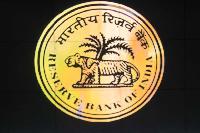
The relationship between the RBI as the central bank and the commercial banks is a defining one for the Indian financial system. RBI provides several functions to banks and in the context of the ever-increasing risks in the financial system; it is inventing new methods to ensure the safety and health of the banking system.
What make the RBI-commercial bank relationship a key factor in the economy is that the RBI is the regulator and supervisor of the commercial banking system.
RBI’s monetary policy has an objective called financial stability which ensures that banks should be healthy and capable of withstanding crisis.
Financial stability is the most vital priority of the RBI’s monetary policy especially after the global financial crisis.
Since the RBI is the supervisor of banks, inspecting balance sheets, it knows each bank closely. Whenever a bank needs liquidity or financial accommodation, it can use the LAF repo window to get immediate money. Similarly, RBI’s repo rate is the anchor for banks in determining the individual interest rate of banks.
In India, every scheduled commercial bank has to keep cash reserves with the RBI. In return, the RBI provides some invaluable services to the banks including: providing payment and settlement system for banks, extending Lender of Last Resort to banks besides insuring the deposits (below Rs one lakh) with Deposit Insurance Corporation. The DIC is a fully owned subsidiary of the RBI.
In the traditional version, RBI is known as banker’s bank as it provides the following functions:
- Payment and settlements of inter-bank obligations and fund transfer between banks.
- Deposit insurance service to the banks
- Cash Reserve Ratio (CRR).
- Acting as a lender of last resort
A magnificent service by the RBI to commercial banks is that the central bank settles payments between different banks. This makes the payment transactions between different banks quite easy. The RBI has two facilities called NEFT (National Electronic Fund Transfer) and RTGS (Real Time Gross Settlement) for interbank payment and settlement system.
But the most valuable way in which the RBI managed the banking system is by providing the regulation and supervision works. It is the efficiency of these two that has enabled the Indian banking system to survive many crises in the last few decades. Several regulatory requirements and supervision norms like capital requirements, provisioning, onsite supervision, liquidity norms, asset quality settings, income recognition norms etc by the RBI has helped to ensure that banking system in the country is well managed and remains healthy.
*********









